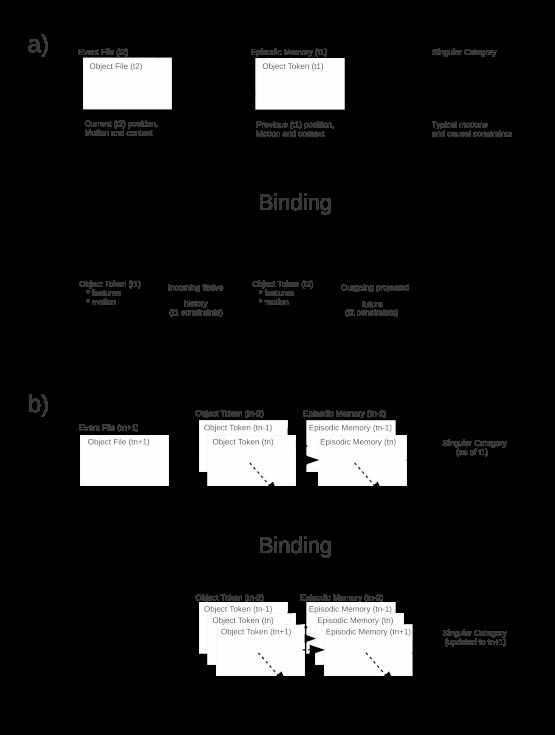Figure 2.
Incorporation of fictive causal histories into a categorization-based model. A. Binding of occurrent object and event files to a previous (timestamped t1) object token, associated episodic memory and associated singular category generates a new object token (timestamped t2) linked to the previous object token by an FCH and extrapolated forward by a projected future. Both interpolation and extrapolation are based on the motion and action constraints available in the singular category as it enters the binding process, that is, the motion and action constraints it encoded as of t1. B. Binding an occurrent object and event file to existing linked lists of object tokens and associated episodic memories appends current (timestamped tn+1) object tokens and episodic memories to the linked lists and updates the feature and motion information in the singular category as required by the current object and event files.

